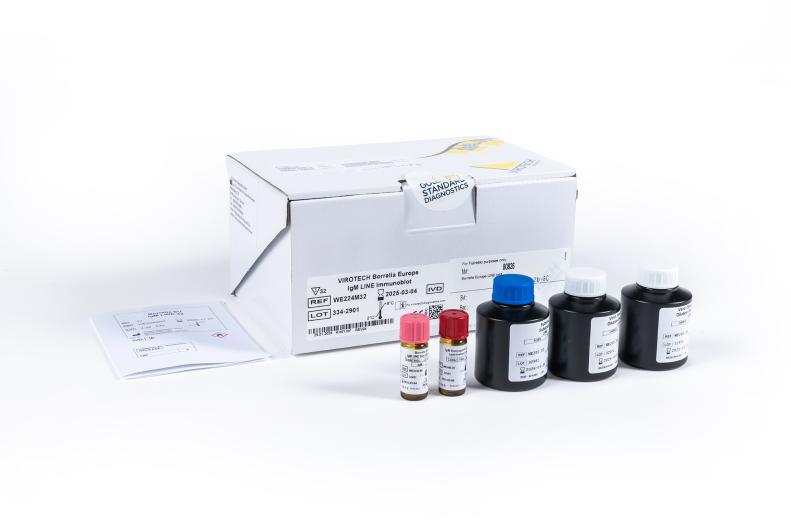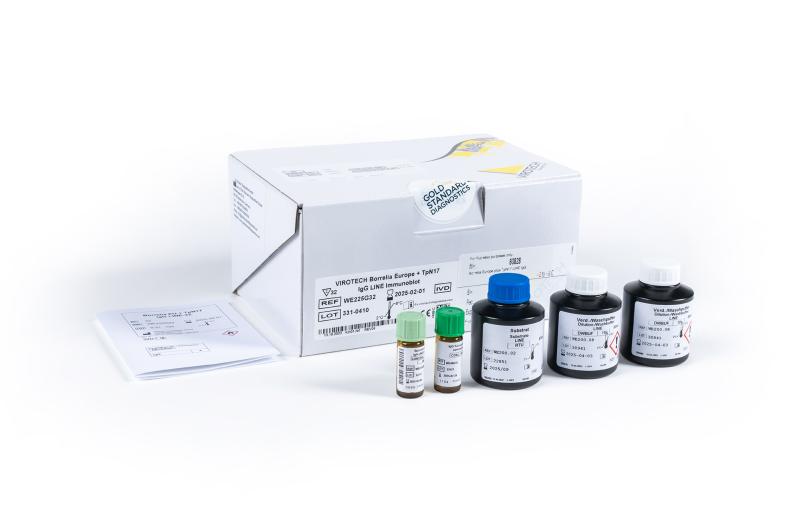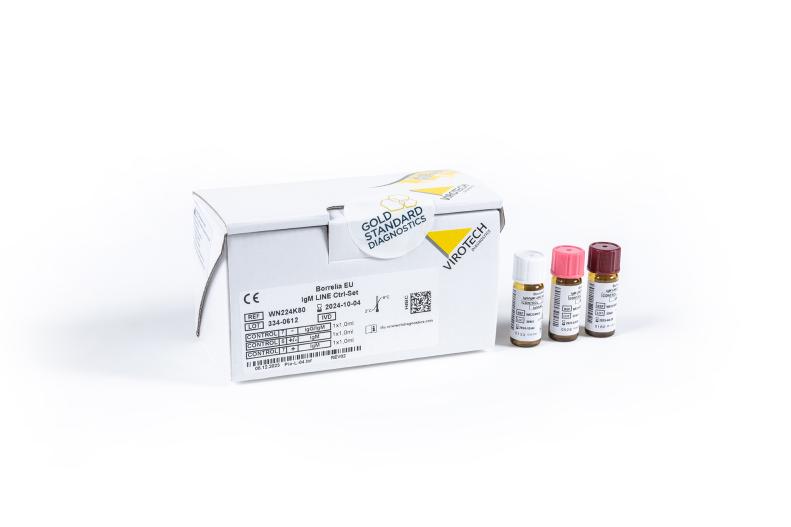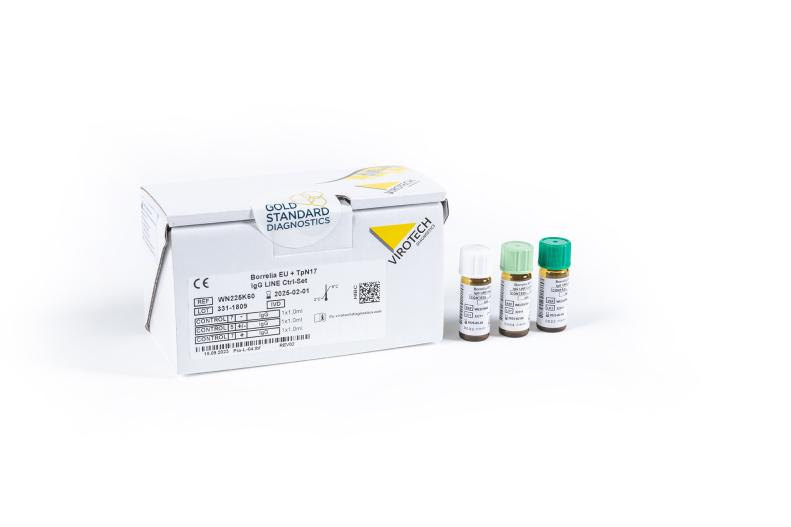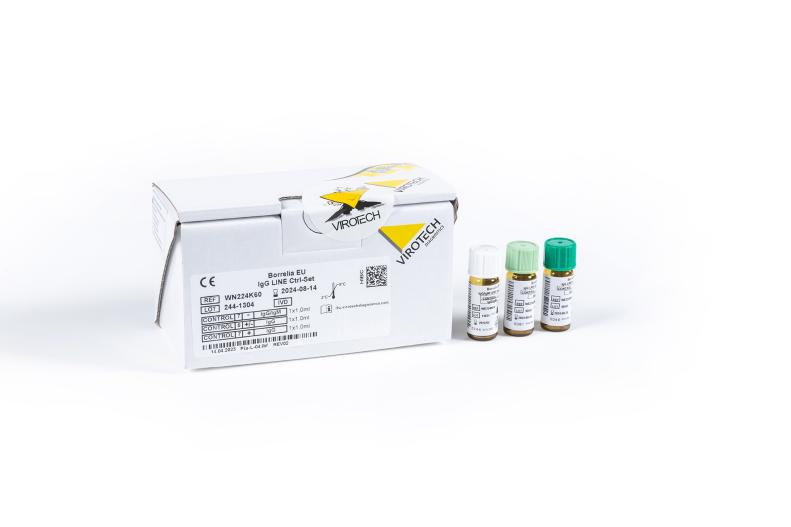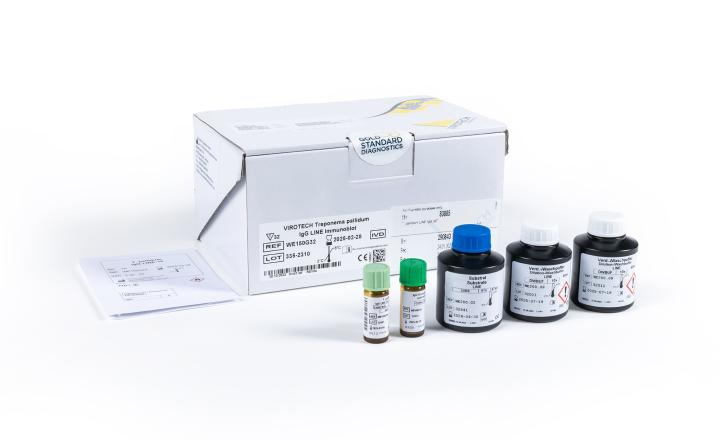Borrelia Line Immunoblot
Borrelia Line Immunoblot assays are for in vitro diagnostic (IVD) use for the qualitative detection of Borrelia (B.) burgdorferi senu lato specific IgG-/IgM-antibodies respectively in human serum. Aside from its use in the serodiagnosis of Lyme borreliosis, the IgG Line Immunoblot is also suited for the diagnosis of neuroborelliosis in CSF.
The Borrelia Line Immunoblot assays are strip-based methods using an optimized combination of native, highly purified and recombinant B. burgdorferi s.l. antigens applied in well-defined positions to nitrocellulose strips by a micro-dispensing method.
The presence of specific IgG-respectively IgM antibodies to B. burgdorferi s.l. can be detected within 2,5 hrs.
Product number 80826
Product number 81388
Product number 80827
Product number 81390
Product number 80828
Product number 81389
Product number 80917
Product number 81394
Product number 80920
Product number 81392

